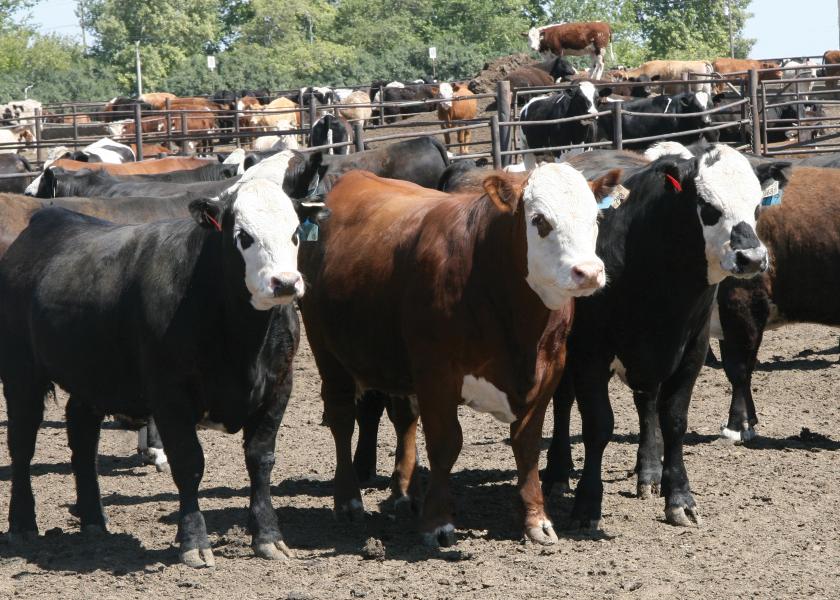Fed Cattle Lower, Beef Prices Spike To Record Highs

Significantly reduced slaughter levels brought the full weight of the COVID-19 crisis to bear on cattle markets this week. Cash cattle prices declined again and boxed beef prices spiked to record highs as retailers scrambled to find product to replenish their offerings to consumers.
Feedlot trade was called moderate at best with prices in the South primarily at $100, and a few at $95 late in the week, $5 t $10 lower than last week. The North traded at $95 to $100 live and $148 to $160 dressed, $5 to $20 lower.
The week’s biggest news was found in boxed beef prices that advanced more than $50 on Choice to $293.37 at the close on Friday, shattering the previous daily record of 265.59 on May 19, 2015. Small production levels pushed retailers to bid up prices to secure inventory. Select also advanced more than $50 per cwt. to close at $279.02, also a record high price.
Harvest levels were estimated to be down 27% for the week compared to a year ago, and about 22% lower over the past three weeks compared to 2019. Lighter harvest levels and price discovery will continue to challenge cattle feeders in the coming weeks and cattle are already estimated to be backing up. One analyst estimates the industry is 200,000 head to 250,000 head behind on slaughter levels needed to keep the industry current.
Agricultural Marketing Service reporters said steer and heifer calves sold uneven at auction from $2 lower to $2 higher. Auction receipts totaled 158,100, compared to 98,800 last week and 193,000 last year.
“Feeder cattle continue to back up on ranches as some producers continue to shake their head and wonder what will happen next,” AMS said. “However, some have had a huge dose of reality and have moved on by selling cattle at lower prices – certainly not what they wanted to do. Grazing calves have started to see their demand wane this week as turnout dates have come and gone. Bigger feeders seem to have stabilized and found some footing.”
Regarding the slowing harvest of cattle, AMS said a backlog of fed cattle at this level will be “impossible to eliminate in a timely fashion resulting in fed supplies remaining above slaughter capacity for several months. Anecdotes of fed cattle being pulled ahead for slaughter by two to three weeks around the beginning to middle of February have now disintegrated to being two to three weeks behind.”
Weekly cattle slaughter for the week is estimated at 469,000 head, 33,000 fewer than a week ago and 173,000 head less (-27%) than last year.
The April 1 Cattle on Feed report released Friday estimated the total at 11.3 million head, down 5% from a year ago. Placements during March were down 23% from last year, while March marketings were 13% higher than year ago.
Related stories:
COVID-19: Kansas Officials Actively Assisting Packing Plants, Workers







